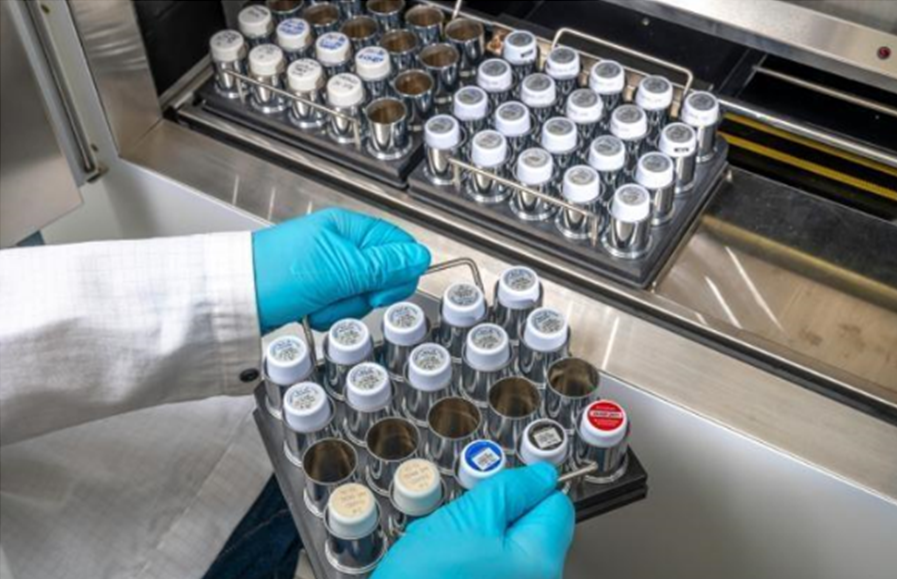
The technology presents a new method of manufacturing a saccharide-based embedding matrix that extends the shelf-life of CRMs, reduces production costs, and minimizes reproducibility issues associated with environmental variability.
Details
Patent: WO2023036917A1
Publication date: 16 March 2023
Field of use
This technology is primarily used in the nuclear and safeguards industry for the accurate determination of nuclear material inventories, notably to calibrate measuring devices. It can apply to various settings where the stable and reliable transportation, storage, and handling of CRMs are crucial, including research laboratories, nuclear facilities, and any industry requiring stringent quality control of nuclear materials.
Main Advantages
- Extended shelf-life: Significantly increases the shelf life of CRMs to over 5 years, surpassing the industry standard of 2-3 years.
- Cost-effectiveness: Reduces material and labor costs associated with CRM production due to the use of saccharides and a quick preparation time of less than 15 minutes.
- Enhanced reproducibility: Simplifies the preparation process, which is less sensitive to environmental factors, reducing the risk of variability in CRM quality.
- Compliance: Complies with ISO 17025:2017 and ISO 17034:2016 standards, ensuring quality and reliability.
Competitive edge
This saccharide-based matrix technology stands out from existing solutions by offering superior long-term stability compared to CAB matrices, and a more efficient preparation process compared to CMC matrices which are the two current benchmark methods for embedding CRMs. With its low manufacturing costs, quick preparation, and adherence to stringent standards, it provides an attractive option for entities seeking a non-exclusive license to leverage advancements in the safe and sustainable management of critical radioactive materials.
Table comparing different benchmark embedding methods ((Cellulose Acetate Butyrate (CAB), CAB with dioctyl phthalate (CAB/DOP), carboxymethyl celluloses matrixes CMC) with the invention presented here (Saccharides).
| CAB | CAB/DOP | CMCe | Saccharides | |
|---|---|---|---|---|
| Solution preparation | 30min | 1h | 2h | 15min |
| Applicatiuon and drying | 1-2h | 1-2h | 24h | 1-2h |
| Manufacturing steps required | Medium | Medium | High | Low/td> |
| Price (material + man hours) | Low | Low | Medium | Very low |
| Long term stability | 5 (3 years guaranteed) | 5 years guaranteed | 5 years guaranteed | 5+ years |
| Risks of precipitates formation | Low | Low | Medium | Low |
Table comparing different benchmark embedding methods ((Cellulose Acetate Butyrate (CAB), CAB with dioctyl phthalate (CAB/DOP), carboxymethyl celluloses matrixes CMC) with the invention presented here (Saccharides).
